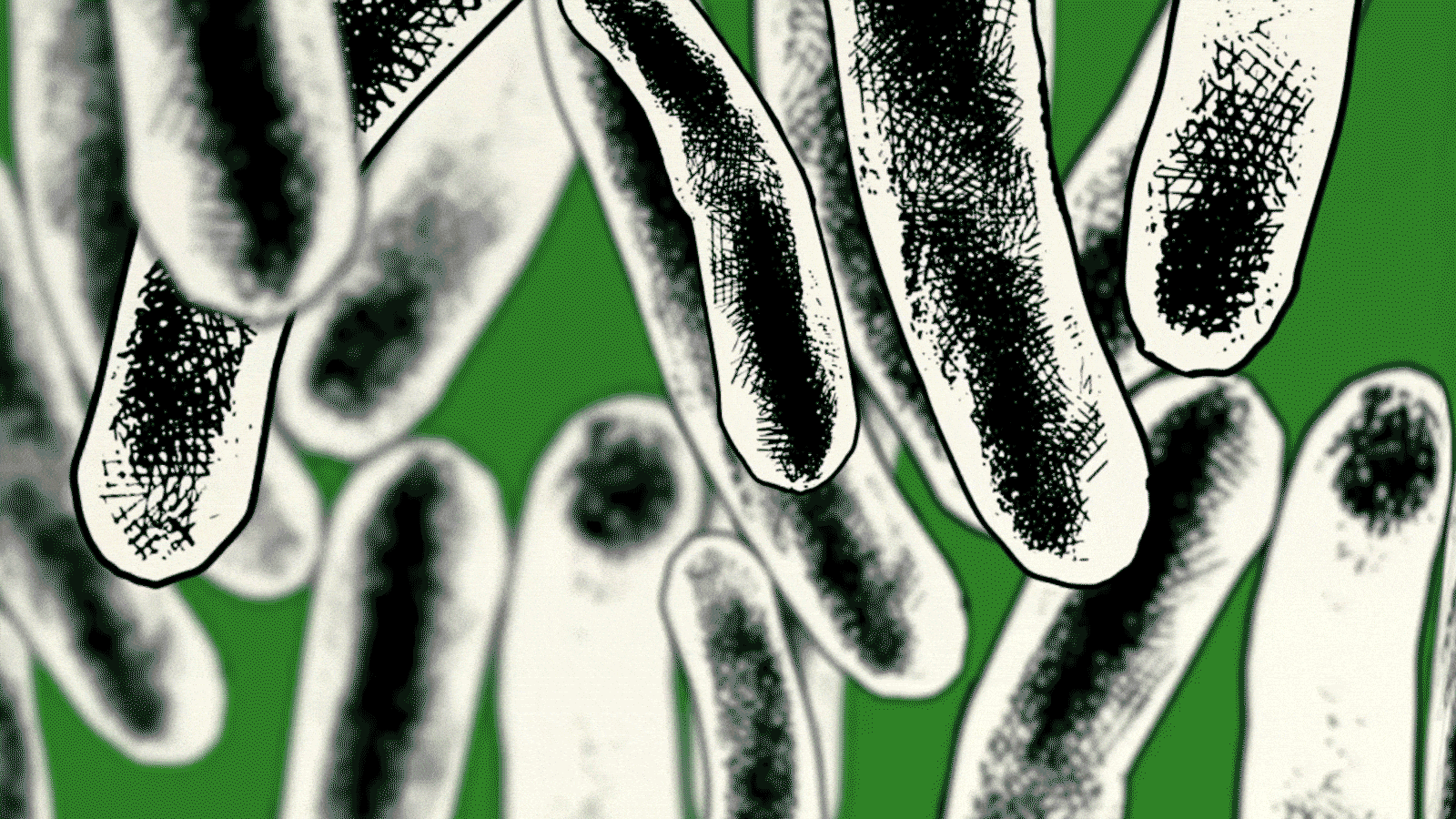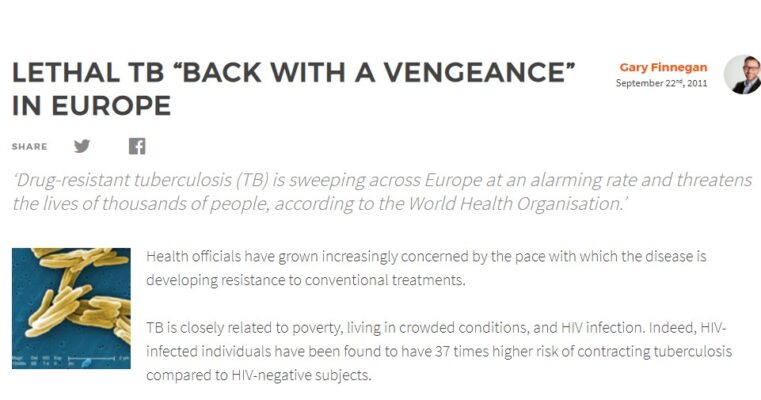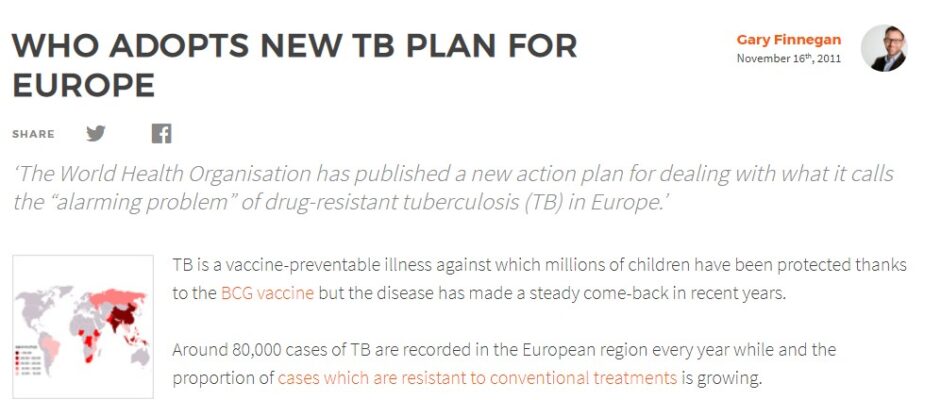What do Emily Bronte, Franz Kafka, George Orwell and Anton Chekov have in common?
Yes, they all wrote celebrated works of literature, but there’s more. They were among the many millions of people who have died of tuberculosis (TB) over several millennia.
Considered by some to be the ‘world’s most successful pathogen’, the bacteria that causes TB has been circulating for at least 70,000 years.

But the disease has not yet been consigned to the history books. Far from it. There are an estimated 1.8 billion people with TB alive today. Many do not have symptoms. However, the disease killed an estimated 1.4 million in 2019, making it one of the top 10 causes of death globally.
Most cases of TB occur outside Europe but the disease caused multiple outbreaks in the 20th century. (My own mother spent almost a year of her childhood in hospital with TB during an epidemic in Dublin in the 1950s.)
Better sanitation, antibiotics and the development of the BCG vaccine have helped to reduce the impact of TB. However, the global burden remains huge, and new antibiotic-resistant strains of the bug threaten to help a dreaded disease to make an unwelcome return.

History of TB vaccination
In 1882, German physician Robert Koch isolated Mycobacterium tuberculosis, the bug that causes TB. The discovery earned him the 1905 Nobel Prize for Physiology or Medicine, but it wasn’t until 1921 that a vaccine against TB was developed.
After years of trying, French researcher Albert Calmettee and veterinarian Jean-Marie Camille Guérin created a weakened form of the bacteria that could safely confer immunity. It became known as BCG – bacillus Calmette Guérin.
By 1928, world leaders at the League of Nations recommended the BCG as a means of reducing the impact of TB. In 1947, a four-year post-war vaccination drive brought the vaccine to millions in Europe with the help of UNICEF.
The WHO’s decision to add the BCG vaccine to its Expanded Programme on Immunization in 1974 saw a major increase in its global impact. However, as rates of TB declined in Europe, most countries removed it from their routine immunisation programmes.
While the vaccine is safe, its effectiveness against TB is considered too low. It is generally only used in countries with high rates of disease.

The potential of BCG to prevent or treat diabetes type I, certain forms of meningitis, cancer and leprosy have been the focus of research for decades, although no clear evidence has emerged. More recently, its potential to trigger an immune response that would reduce the impact of COVID-19 hit the headlines (without ultimately proving to be effective).
Despite this, scientists are exploring how new vaccine technologies could help to create more effective vaccines against TB. It is a technically challenging task, but the urgency behind the search for new preventative tools is driven in part by the threat of multidrug-resistant tuberculosis (MDR-TB).
The most powerful antibiotics used to treat TB do not work on these bacteria, raising the risk of new outbreaks of untreatable disease. Europe has the highest rate of MDR-TB in the world.

A 2011 plan to combat the disease in Europe included calls for investment and global collaboration to find new vaccines and medicines. Organisation including the Global Fund, the Tuberculosis Vaccine Initiative (TBVI), and the European & Developing Countries Clinical Trials Partnership (EDCTP) are among those leading the charge. But, while there are some promising vaccines in the pipeline, none has yet proven safe and effective against TB.
So, how close are we to finding a new TB vaccine?
The WHO says several vaccine candidates are in the pipeline, using a variety of vaccine technologies. ‘As we mark the 100 year anniversary of the BCG vaccine, we need to come together to ensure that the world does not have to wait for so long to access vaccines that can save millions of lives,’ said Dr Tereza Kasaeva. Director, WHO Global TB Programme. ‘The clock is ticking – the time to invest in TB vaccines is now!’
The next century may deliver a new chapter in the TB vaccine story. Watch this space.





Eileen Hynes
October 1st, 2021
I had tb in 1980 at 26 years of age (my sister had discouraged me from having the vaccine in school). My maternal grandmother died of it in the early 30’s. My mother never caught it.I wonder if I now have protection against it, though I believe it is always dormant.
Peter English
March 24th, 2022
I commissioned an article by this over a decade ago:
1. Whittaker E, Kampmann B. Novel tuberculosis vaccines – why do we need them and what is on the horizon? Vaccines in Practice 2011;4(1):9-11. (http://www.vaccinesinpractice.co.uk).
Copy available at https://www.dropbox.com/s/8rushtewijqvvxy/VIP_4_1_2011_TBVaxKampmann.pdf?dl=0
I’d be interested to hear from those working on TB vaccines how much has changed.